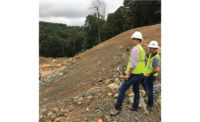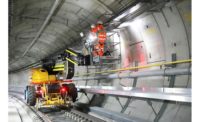The city launched the project's procurement in summer 2006, even though the designs were not ready, says Nicholas Lyons, an HdM associate. "We asked for another six months," he says, but the city pressed on.
The politicians in charge "were not aware of the concerns of the architects," says a spokeswoman for the city's culture ministry. Officials at ReGe had written off the designers' comments as "the usual attitude of architects … in all complex projects," she adds.
When final bids were submitted, only the Hochtief team participated. In early 2007, the Adamanta joint venture, equally owned by Hochtief A.G. and Commerz Real A.G., Düsseldorf, signed a deal covering the building's construction, then valued at $310 million. Other contracts, including Hochtief's, covered 20 years of facilities management of the building as well as separate development rights to the hotel and apartments.
Because the design was incomplete, the contract provided for variations, says Deußer. But with the designers and contractor reporting separately to ReGe, the two teams' efforts fell out of sync, adds Lindert. Relationships went from bad to worse.
The project plunged to its lowest point in 2011, when Hochtief and ReGe could not agree on the design of the main hall's steel-and-concrete roof. "We told the client it was not possible to build the roof with the [provided] static calculations, and we wanted to improve it," says Deußer.
The hall's tent-shaped steel-and-concrete roof is roughly circular in the plan, with diameters ranging from 45 m to 50 m. Its 20-centimeter-thick covering concrete panels are supported by 23 large radial steelwork trusses.
Whether the trusses acted as pin- jointed or fixed frameworks became a point of dispute, says Deußer. There were also questions over the extent to which the top truss chords acted compositely with the concrete. Generally, Hochtief believed the roof structure needed reinforcing, but the owner stuck to its design.
Roof steelwork started going up in March 2011, but nearly 20 months passed, including negotiations, before the roof was structurally done. By then, the whole project was late, and everybody was blaming everybody else, remembers Marcelino Fernández Verdes, Hochtief group's chief executive officer.
The contract structure was "a bit of mess," says Fernández, who personally started negotiations with the city's mayor, Olaf Scholz, and HdM's project partner, David Koch, in summer 2012. Terminating the contract was an option, "but we proposed that our aim was to build the building because we are builders," he says.
A truce, followed by months of negotiations, led to a deal, sealed this April. The key contract change transferred design responsibility from the city to Hochtief. The design teams became Hochtief's subcontractors, but HdM retained independence in quality control.







Post a comment to this article
Report Abusive Comment